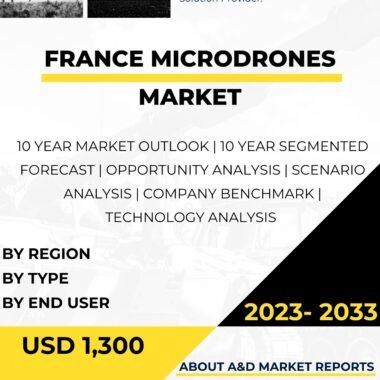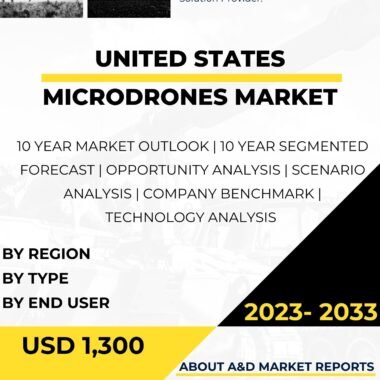Description
The microdrones market in Japan has been experiencing significant growth and strategic importance in recent years due to the nation’s increasing emphasis on technological advancements, defense modernization, and the rising demand for unmanned aerial systems (UAS). Microdrones, also known as small unmanned aerial vehicles (UAVs) or drones, are compact, lightweight, and versatile aircraft that offer a wide range of applications across various industries, including defense, agriculture, infrastructure inspection, environmental monitoring, and disaster response.
In Japan, microdrones have become essential tools for enhancing surveillance, reconnaissance, and intelligence gathering capabilities. The Japan Self-Defense Forces (JSDF) have been actively adopting microdrones for a range of military applications, including intelligence, surveillance, and reconnaissance (ISR) missions. These small UAVs provide real-time data and high-resolution imagery, offering valuable situational awareness to military personnel on the ground and facilitating informed decision-making during critical operations.
One of the primary applications of microdrones in Japan is in disaster response and search and rescue (SAR) operations. Due to its geographical location and susceptibility to natural disasters such as earthquakes, typhoons, and tsunamis, Japan faces an ongoing need for effective disaster response capabilities. Microdrones are used to survey disaster-stricken areas, assess damage, and identify potential hazards, enabling authorities to plan and execute targeted rescue operations and humanitarian assistance effectively.
Moreover, microdrones have found applications in the agriculture sector in Japan. They are used for precision agriculture, where they collect data on crop health, soil conditions, and water usage. This information helps farmers optimize crop yields, reduce resource wastage, and make more informed decisions to enhance agricultural productivity.
In addition to these applications, microdrones are also utilized in infrastructure inspection and monitoring. They can access hard-to-reach areas, such as bridges, power lines, and pipelines, to assess structural integrity and identify maintenance needs, reducing the risks associated with manual inspections.
As Japan emphasizes indigenous defense capabilities, the domestic production and development of microdrones have seen substantial growth. Collaborations between the government, defense industry, and research institutions have fostered innovation, leading to the creation of advanced microdrone platforms tailored to Japan’s specific defense requirements.
Japan’s alliance with the United States has also played a significant role in the development of its microdrones capabilities. Through this partnership, Japan has access to advanced technologies and expertise, contributing to the modernization of its defense forces and enhancing interoperability with allied nations.
The microdrones market in Japan also benefits from advancements in miniaturized electronics, propulsion systems, and autonomous navigation. Manufacturers have leveraged these advancements to create microdrones that are smaller, faster, and more agile, enhancing their performance and mission capabilities.
However, the microdrones market in Japan also faces challenges related to regulations, cybersecurity, and public acceptance. As the use of microdrones increases, there is a need for clear regulations to ensure their safe and responsible operation in public airspace. Balancing the benefits of microdrones with potential privacy concerns and safety risks is crucial for maintaining public acceptance and support.
Addressing cybersecurity is also essential, as microdrones can be vulnerable to hacking and unauthorized access, posing potential security threats.
In conclusion, the microdrones market in Japan has witnessed significant growth and strategic importance, driven by the nation’s focus on technological advancements, defense modernization, and the increasing demand for unmanned aerial systems. Microdrones provide critical capabilities for defense, disaster response, agriculture, infrastructure inspection, and environmental monitoring, making them integral to various industries in Japan. The collaboration between the government, defense industry, and research institutions, as well as international partnerships with allied nations, fosters innovation and contributes to the growth of the domestic microdrones market. Addressing challenges related to regulations, cybersecurity, and public acceptance is crucial for further enhancing Japan’s microdrone capabilities and ensuring their responsible and effective use in various applications. With its strategic focus on enhancing indigenous defense capabilities and technological advancements, Japan remains committed to leveraging advanced microdrone technologies to enhance its defense and civilian capabilities and contribute to regional and global safety and stability.




